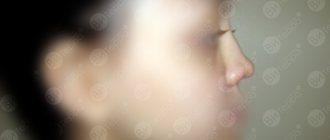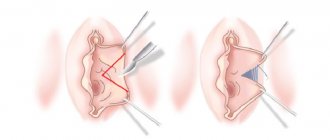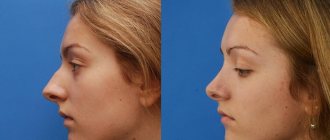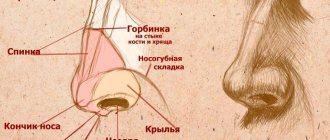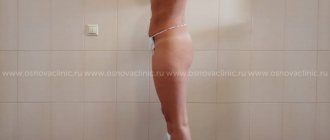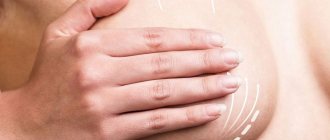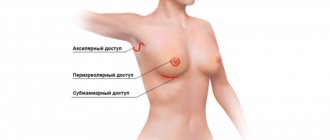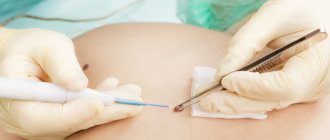The essence of the procedure
Deviation of the internal nasal septum is much more common than we think.
According to statistics, only about every fifth person has it perfectly smooth. Such a defect is quite rare at birth. But by the preschool period, about a third of children have this problem. Some get it due to compression of the face during complicated childbirth. Many babies suffer from falls and minor nose injuries.
Most adults don't even know they need septoplasty. Until they decide to get rid of problems such as snoring, frequent colds and ENT diseases, difficulty breathing, pronouncing words “through the nose.”
They go to an otolaryngologist. And only at his appointment the cause is discovered - an unfortunate curvature of the nasal septum.
Septoplasty helps solve the problem. Depending on the situation, the doctor recommends removing part of the soft tissue, correcting the cartilage, or even filing the nasal bones.
Most manipulations can be performed through the nasal cavity. Therefore, as a rule, there are no external marks or scars left.
Preparing for surgery
Before surgery, our clinic requires a complete examination of the patient to assess his condition, identify possible limitations and contraindications, and select the optimal anesthesia option:
- lab tests;
- CT examination of the nose and sinuses, chest organs, ECG and fluorography;
- consultations with an anesthesiologist and specialized specialists
Based on the research results, the operating otolaryngologist makes the final decision on the surgical method.
Also, before the operation, doctors recommend:
- refrain from smoking and alcohol;
- do not eat allergens;
- do not use vasoconstrictor drops;
- stop taking blood thinners
Execution Methods
Just a few decades ago, the only way to straighten a deviated nasal septum was a standard operation. It was broken, filed, and excess tissue was trimmed with an ordinary scalpel. Needless to say, rehabilitation after such an intervention was long and painful.
Fortunately, modern medicine is developing by leaps and bounds. Today, more and more effective and safe methods of nose correction are appearing.
Depending on the type of defect, the surgeon can use one of the main types of septoplasty:
- Thread resection. It is performed when it is necessary to remove excess soft tissue and tighten the septum. Several strong threads are attached to it, around which connective tissue is gradually formed. After 2-3 months they are removed.
- Laser septoplasty. The laser can be used in different ways: to cut the skin (as a replacement for a regular scalpel) or for a seamless operation, during which the cartilage is softened and the soft tissue is “evaporated”. At the same time, it seals small vessels and capillaries, disinfects the wound and significantly shortens the healing period.
- Endoscopy. A special instrument is inserted into the patient’s nasal cavity – an endoscope equipped with a miniature video camera that transmits the image to a monitor. Thus, the surgeon has the opportunity to control the entire process in detail and perform manipulations with high precision. The endoscopic technique also often uses a laser.
Depending on the degree of complexity, the operation can take from 30 to 60 minutes. In rare cases, when there are multiple bone fragments or a large amount of cartilage or bone tissue needs to be removed, it is tightened.
Hospitalization of the patient is not required. Within 20-30 minutes after completion of the procedure, you are allowed to go home.
At a special price of 19,999 UAH. until 12/31/21
Price includes:
- Plastic surgery
- septoplasty is performed endonasally, without incisions, thanks to endoscopic instruments. - Anesthesia
- modern, safe anesthesia. Our work uses the technique of medicated sleep, thanks to which the operation becomes painless and safe for the patient. - Hospital stay and meals -
a comfortable hospital of European level is at your service. After the operation, you need to spend a day in the clinic.
No additional overpayments.
Postoperative period
Although septoplasty is considered a low-traumatic operation, in any case it is a surgical intervention. It remains a strong stress for the body.
Naturally, it takes some time to restore damaged tissue and fully recover. How quickly this happens depends largely on the patient himself.
Active rehabilitation
The active postoperative period of septoplasty lasts 7-10 days. But the first 24 hours are especially important, during which it is advisable to provide the patient with complete rest.
Avoid making sudden movements, talking a lot, or touching your face with your hands. Do not drink hot water or eat too hard food.
After the end of the anesthetics and/or the release of anesthesia, pain always occurs. If the bone tissue is not affected, then they are not unbearable.
Often the body temperature rises slightly. This must be monitored and, if necessary, medication taken to reduce it. Very high heat can cause bleeding.
In order to avoid complications, a number of strict prohibitions are imposed. For 5-7 days you cannot:
- work physically;
- blow your nose and rub your nose;
- smoking and drinking alcohol;
- drink carbonated drinks;
- eat spicy food;
- to take a bath;
- wash with very hot water;
- bend forward.
You will have to sleep on your back. Moreover, the head should be slightly raised at all times.
Restoring breathing
The biggest inconvenience for many patients is that in the first days after septoplasty, nasal breathing is practically absent. Often, thick cotton swabs are placed in the nose for a day to prevent bleeding. But even after their removal, it is very difficult to breathe due to swelling of the soft tissues.
Anti-inflammatory and moisturizing nasal drops help cope with the problem. Only a doctor can prescribe them.
Remember that the use of vasoconstrictors in the postoperative period is strictly prohibited. You should also not blow your nose or rinse it with water. Violation of these rules is fraught with serious complications.
From 2-3 days after the operation, crusts begin to form in the nose, which dry out the mucous membrane and also interfere with normal breathing. Under no circumstances should they be torn off.
To speed up detachment, you can very carefully lubricate the nasal passages with peach or sea buckthorn oil. They perfectly moisturize and soften the skin, and also accelerate regeneration processes.
Physiotherapy
Even doctors still argue about whether physiotherapeutic procedures are needed after septoplasty. Most are inclined to believe that if rehabilitation proceeds without complications, there is no particular need for them. In any case, you can start doing them no earlier than 3-4 weeks after the operation.
Physiotherapy can help when bruises persist for too long, hematomas do not resolve, or nasal sensitivity does not return. Usually a course of one of the following procedures is prescribed:
- ultrasound;
- darsonvalization;
- electrophoresis;
- microcurrents.
Today, many people have portable electrical appliances intended for home use and begin to work with them on their own, trying to shorten the post-operative period. Under no circumstances should this be done.
Permission for intensive treatment in the nasal area, such as the procedures listed above, can only be given by a doctor.
Lifestyle
Although bruises and swelling after septoplasty disappear completely in a maximum of 2-3 weeks, and you can already go to work on the 10-14th day, you will have to be careful for several more months. And the main ban is on smoking, which irritates the nasal mucosa, reduces immunity and slows down regeneration.
For a month you should not sunbathe, take hot baths or actively engage in sports. Ball games, skating and other activities that could involve falling and/or injuring the face will remain prohibited for 3-6 months. And contact sports – for the whole year.
It is very important to watch your diet and drink plenty of fluids. When the body is dehydrated, the mucous membranes are the first to suffer, and they are already damaged after surgery.
To strengthen the immune system and quickly recover, you need vitamins. It is better to get them from natural products, and not from plastic jars. The diet should include greens, fresh fruits and vegetables, lean meats and fish.
Operation description
The curved part of the cartilage and bone is removed. The removed cartilage is remade and installed in place of the defect. Splints (removed after 10-14 days) or tampons (removed after 3-5 days) are inserted into the nose. The patient remains in the hospital for 24 hours. Subsequently, the patient comes for examination 1-3 more times, after removing splints or tampons for postoperative toilet of the nasal cavity.
In the clinic, septoplasty is performed endonasally (i.e. through the nasal cavity), without incisions, thanks to the endoscopic instruments used. Endoscopic septoplasty has undeniable advantages over surgical septoplasty - less tissue trauma, reduced risk of nosebleeds.
If you have any questions about the operation,
please call
